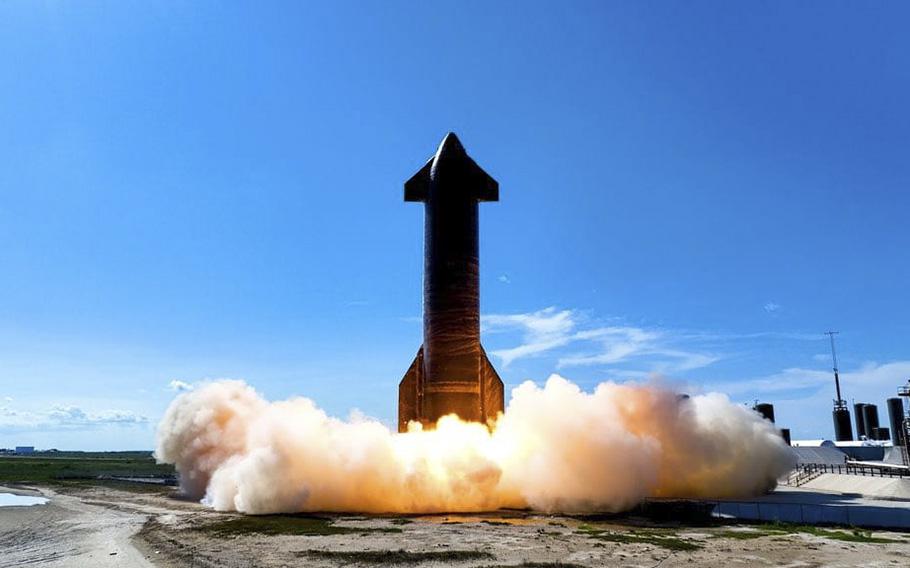
SpaceX CEO Elon Musk tweeted Monday that his company’s massive Starship rocket will conduct its first orbital launch “near the end of third week of April. (SpaceX/Facebook)
(Tribune News Service) — The largest space rocket ever built could splash down around the Hawaiian Islands within the next two weeks.
SpaceX CEO Elon Musk tweeted Monday that his company's massive Starship rocket will conduct its first orbital launch "near the end of third week of April, " assuming it receives final regulatory approval. The Federal Aviation Administration also issued a notice then that the launch could occur Monday.
According to documents filed with the Federal Communications Commission, the rocket will launch into orbit from Starbase, Texas, and make a "soft ocean landing " about 62 miles off of Kauai's northwestern coast. The Coast Guard also has issued a local notice to Hawaii mariners about the potential splashdown in the islands.
The Starship is the largest rocket ever constructed at 394 feet tall standing upright. It is powered by 33 engines that together are expected to surpass the thrust capacity of NASA's Space Launch System, which previously was considered the world's most powerful rocket.
SpaceX has proposed to use Starship for crewed and cargo launches in support of building the Starlink internet constellation, a series of satellites currently operated by SpaceX. The company also claims that Starship is capable of "point-to-point transport on Earth, enabling travel to anywhere in the world in one hour or less."
SpaceX also has claimed the rocket will be fully reusable, and capable of carrying crew and cargo to Earth orbit, the moon and Mars.
It would be the first fully reusable rocket.
Long-term development goals are for the Starship to be refuelable in orbit before traveling to destinations that require more change in velocity—particularly Mars. Musk, who until recently was the world's richest person, has had a long fascination with space and with the red planet in particular—even before founding SpaceX in 2002.
He has pledged that his company will not only send the first crewed mission to Mars, but has said that he intends to colonize the planet. In 2022 during an interview with TED Talks head Chris Anderson at Musk's Tesla Gigafactory Texas, the billionaire said he hopes to send a million people to Mars by 2050.
But it's not a sure thing that Starship will even make it to Hawaii. Four of the five previous Starship high-altitude test flights ended in explosions, with the fifth—in May 2021—being the only time a prototype landed in one piece. Musk himself has previously estimated the current Starship rocket has only a 50 % chance of even successfully reaching orbit.
SpaceX is the first private company to send humans into orbit, which it did in May 2020. But while the company is privately owned, it—and Musk—have benefited greatly from federal funding. Much of its work is in taxpayer-funded government contracts with agencies like NASA and the Department of Defense.
(c)2023 The Honolulu Star-Advertiser
Visit The Honolulu Star-Advertiser
Distributed by Tribune Content Agency, LLC.